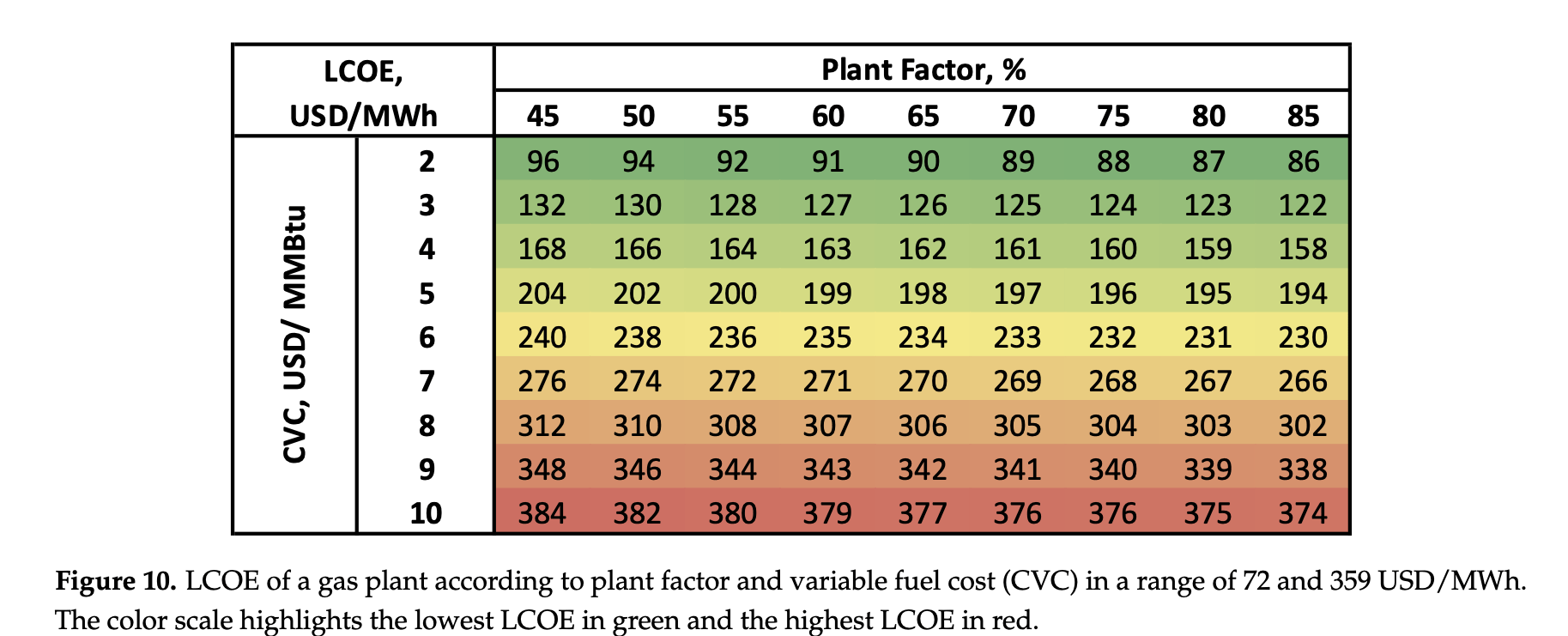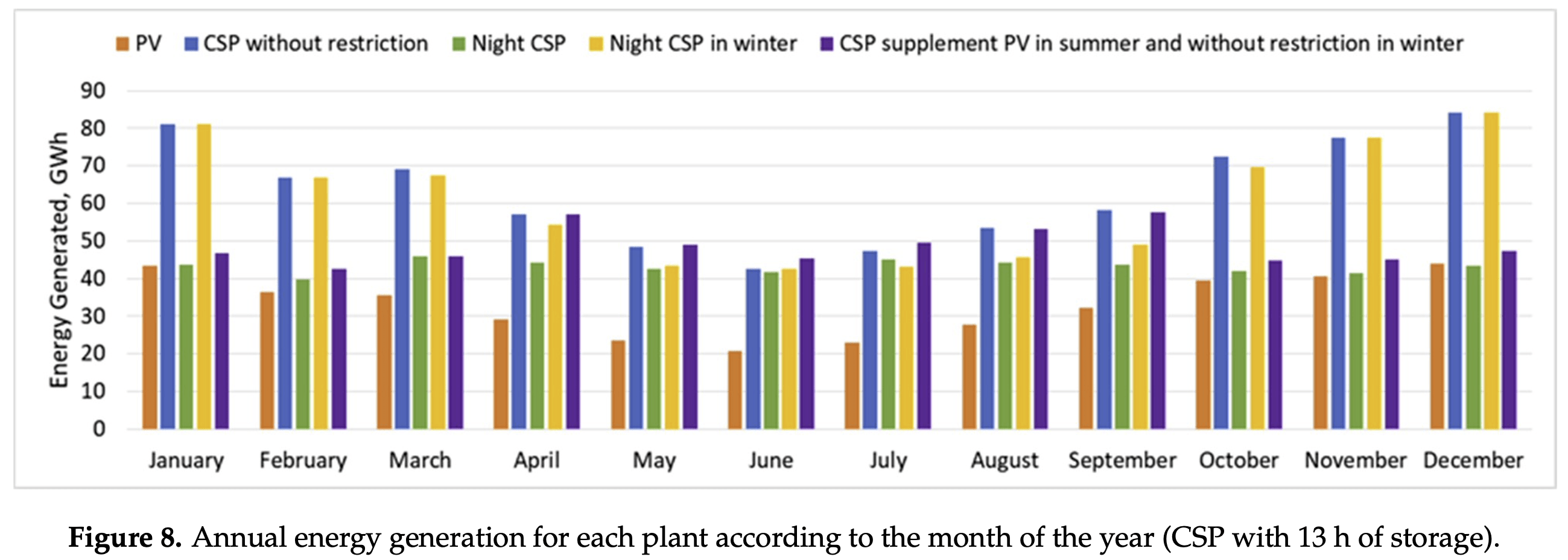
IMAGE@Fraunhofer: Comparison between Concentrated Solar Power and Gas-Based Generation in Terms of Economic and Flexibility-Related Aspects in Chile
Hybrid PV-CSP in Chile
A new study from energy engineering consultancy Fraunhofer – for Chile compares the Levelized Cost of Energy (LCOE) of hybrid solar with gas. Comparison between Concentrated Solar Power and Gas-Based Generation in Terms of Economic and Flexibility-Related Aspects in Chile enumerates the trade-offs of the reliability attributes and externalities of both thermal energy technologies; Combined Cycle Natural Gas (CCNG) gas and concentrated solar tower (CSP).
The study found that a solar hybrid that combines PV and CSP including 13 hours of thermal energy storage would be able to replicate the flexibility of gas power plants – at a lower LCOE.
Thermal energy storage for grid reliability
“We are trying to put it into our public policy to account for the ancillary services of CSP,” explained physicist Maria Teresa Cerda Guevara, head of CSP research at Fraunhofer Chile.
“In hybrid solar plants combining PV and CSP, the flexibility from CSP thermal energy storage is a benefit to the grid. This is why we’re trying to put a price on these benefits and why we do these kinds of studies; to encourage public policy in the ministry. We’re trying to help the country to determine and to do the proper calculations. Here in Chile, very few people know about CSP, so they’re afraid. They don’t know how to include this in their calculations of long-term planning.”
The study compared four possible configurations of the two solar technologies to create four different delivery profiles.
Four solar generating profiles proved lower than gas at $86/MWh
The four different operating profiles are for a solar hybrid comprising 150MW PV and 130MW tower CSP with 13 hours of thermal energy storage. All four generation profiles include normal daytime PV generation. However, CSP’s time-shifting flexibility through its thermal energy storage enables it to deliver generation at different times of day as well as seasonally.
To operate under the different profiles, the CSP would be designed for a solar multiple of up to 2. With a solar multiple of 2; the solar field has twice the capacity of the power block. This enables the plant to store the maximum in the thermal energy storage. Even though this would be more expensive than a normal solar multiple ratio of 1 to 1 – the trade-off is that the extra storage means that it generates more power, and thus earns more money.
The LCOE of the four generating profiles ranged between $53 – $71/MWh, compared with the gas LCOE at $86/MWh, assuming an 85% capacity factor (CF) and fuel cost of $2/MMBtu.

Fraunhofer study: the four hybrid PV-CSP operating profiles considered IMAGE@Fraunhofer
The four generating profiles for hybrid PV-CSP in Chile:
Base case: Would deliver with no restriction year round (blue: $53)
Night CSP: Would deliver only at night year round (green: $71)
Night CSP in winter: Would deliver only at night in winter, but no restriction in summer (yellow: $56)
Flat profile: Would deliver only at night in summer; both day and night in winter (brown: $63)
The researchers were surprised by their findings. “From an academic point of view, we had thought it will be cheaper to offer only at night,” said Guevara. “But what we found was that the PV/CSP solar hybrid with no restriction during day or night is actually cheaper.”
Thermal storage in CSP cuts Chilean PV curtailment
The Ministry of Energy, in its 2018–2022 RoadMap effectively has effectively banned new coal power generation. Chile committed to the closure of existing ones by 2040. In addition, new requirements for costly carbon capture and storage now make coal uncompetitive. However natural gas generation, both single cycle and combined cycle, still competes with renewables. Chile has free-for-all-auctions in which fossil-fueled and clean energy generation resources compete on price.
The auctions have three bidding time slots. The daytime time slot is suited to PV; 8 in the morning to 6 at night. The other two would be where solar hybrids would compete with gas; 6 to 11 at night, and 11 to 8 in the morning.
Over-generation in some hours from solar PV is already an issue in Chile. Hybrids of the two solar technologies offer a solution. The more storage hours the CSP plant has, the more it lowers the risk of curtailment. Also, this increases its ability to sell energy during high spot prices.
CSP is ideal for Chile as it has the world’s highest solar resource (a DNI of 3,614 kWh/m 2). Yet it imports 80% of the fossil fuels it uses for electricity. So the LCOE comparison with natural gas is crucial, because, due to being thermal power plants, both natural gas and CSP bring the same grid benefits of flexibility.
Through studies like this, the energy consultancy Fraunhofer lowers investor risk.














































